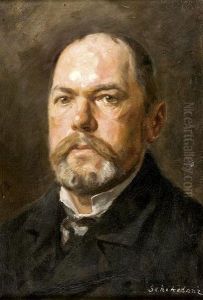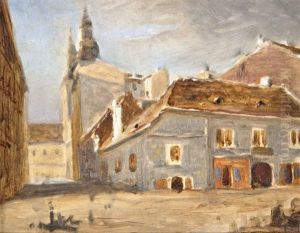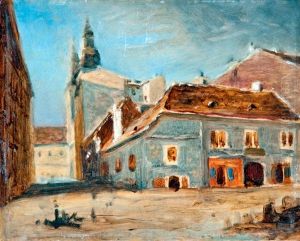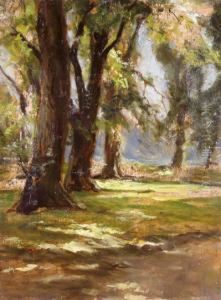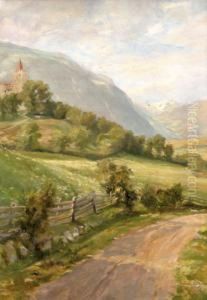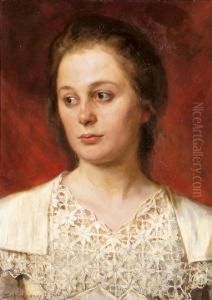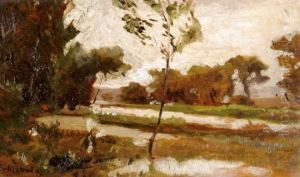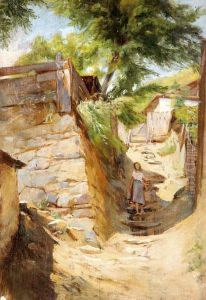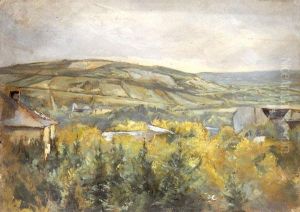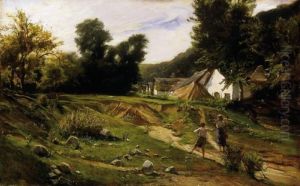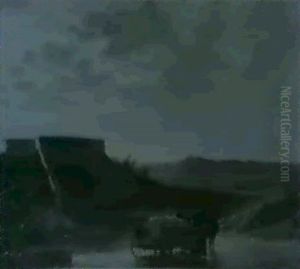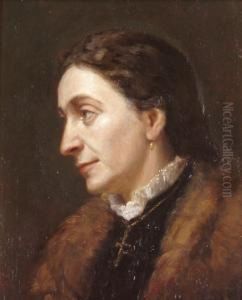Albert Schickedanz Paintings
Albert Schickedanz was an influential architect and painter, born in 1846 in Buda (now Budapest), Hungary. He is best known for his significant contributions to the architectural landscape of Budapest during the Austro-Hungarian Empire. Schickedanz studied at the Academy of Fine Arts Vienna, which was a prominent institution in the Habsburg Empire for training artists and architects. His education there profoundly shaped his architectural vision, which was characterized by a blend of classical styles with emerging modernist elements.
After completing his studies, Schickedanz embarked on a career that saw him becoming one of the key figures in Hungarian architecture at the turn of the 20th century. He was deeply involved in the planning and construction of the Millennium Monument in Heroes' Square (Hősök tere), one of Budapest's iconic landmarks. This work, in particular, showcases his skill in creating monumental structures that embody national pride and historical significance.
In addition to the Millennium Monument, Schickedanz is also celebrated for his design of the Museum of Fine Arts and the Hall of Art (Műcsarnok) in Budapest, both located near Heroes' Square. These buildings demonstrate his adeptness at integrating function with aesthetic appeal, making them cornerstones of Budapest's cultural and artistic heritage.
Schickedanz's work extended beyond public and monumental architecture. He also designed several residential buildings, villas, and estates, contributing to the architectural diversity of Budapest and its surroundings. His designs often featured elaborate details and a harmonious blend of architectural styles, reflecting the eclectic tastes of the era.
Albert Schickedanz's contributions to architecture were not only in his buildings but also in his role as an educator and mentor to future generations of architects. He was a respected professor, imparting his knowledge and passion for architecture to students, many of whom would go on to make their own marks on the field.
Schickedanz died in 1915, leaving behind a legacy that continues to be celebrated for its artistic and cultural significance. His work remains a testament to the vibrant architectural scene in Hungary during his lifetime and serves as an inspiration for both historical study and contemporary practice.
